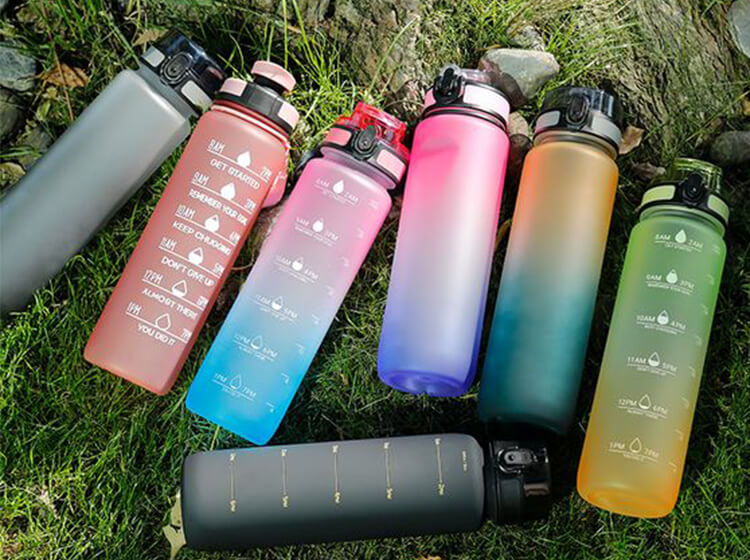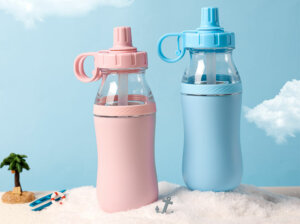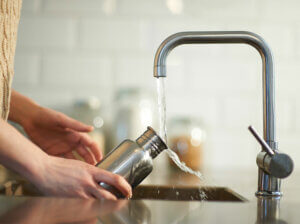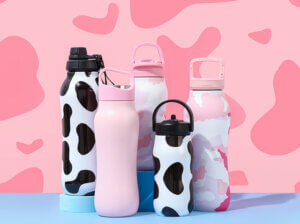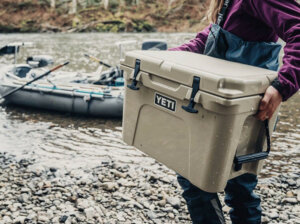Bisphenol A, commonly known as BPA, is a chemical that has become ubiquitous in our daily lives. From plastic containers to the lining of food cans, BPA is present in numerous products. In this article, we will delve into the reasons behind the concern surrounding BPA, exploring its impact on our health, particularly when found in water bottles.
What is BPA and why is it bad?
BPA, a synthetic compound integral to the production of plastics and resins, boasts a chemical structure adorned with two phenol functional groups, rendering it versatile across diverse manufacturing processes. The concern surrounding BPA has been magnified through numerous studies, each sounding an alarm about potential health risks stemming from exposure. From hormonal disruptions to developmental quandaries, the impact of BPA on human health demands our attention.
How dangerous is BPA and how does BPA affect the body?
Mounting unease revolves around the presence of BPA in water bottles, given its propensity to infiltrate the water, particularly under elevated temperatures or exposure to acidic substances. This concern is exacerbated in plastic bottles containing BPA, heightening the risk of the chemical leaching into the bottle’s contents.
BPA earns its status as a health hazard by mimicking the hormone estrogen within the body, resulting in the disruption of normal hormonal equilibrium and interference with crucial biological processes. Even minimal exposure to BPA has been correlated with adverse health effects, spanning reproductive issues, developmental challenges in fetuses and young children, and an elevated susceptibility to certain diseases.
When did nalgene stop using BPA?
Nalgene, a well-known manufacturer of water bottles and containers, made a significant shift in its product composition in 2008 when it decided to cease the use of Bisphenol A (BPA). Nalgene’s decision sent ripples through the industry, influencing other manufacturers and shaping consumer preferences. Examining the aftermath sheds light on the impact of corporate decisions on public health.
How much BPA is in a water bottle and why is BPA bad in water bottles?
The amount of bisphenol A (BPA) present in a water bottle can differ depending on the type of plastic used in its manufacture and the production process employed.
Here are some guidelines on how to choose BPA-free plastic water bottles:
How to choose BPA-free plastic water bottles:
1. Look for the “BPA FREE” label. This means the bottle does not contain bisphenol A and is safer and healthier.
2. If you need a bottle that can hold hot water (up to 100℃), look for bottles with the numbers 5 and 7, and those with the letters TPC, Tritan, PPSU, and PP.
3. If you need a bottle that can be sterilized at high temperatures, choose bottles with the numbers 5 and 7, and those with the letters PP and PPSU, which can withstand high temperatures of 120°C and 180°C, respectively.
4. Avoid bottles with the numbers 1, 2, 3, 4, and 6, or with the letters PET, HDPE, PVC, PE, or PS. If the bottle has the number 7, avoid those with PC letters, as they can produce bisphenol A when exposed to heat.
How to choose plastic cups:
1. Check the materials. Look for plastic cups made of safe materials, such as silicone resin, which has strong resistance to low and high temperatures and a stable structure.
2. Look for cups labeled “for food.” Do not use plastic cups labeled for other purposes, as they may affect your health.
3. Smell it. Avoid plastic cups with a pungent plastic or rubber smell as this may indicate cheap and poor quality materials.
4. Look for the production license mark. Plastic water cups should have an obvious “QS” mark indicating they have been tested and approved for production.
5. Check the manufacturer. Look for clear information on the manufacturer’s name, production address, dealer, and contact information to ensure you are buying from a reputable source.
Wholesale BPA-free Water Bottle Manufacturer
Our selection of plastic materials includes PP, PC, Tritan, SK, PETG, Acrylic, PCTG, AS, and many others. All of our materials are 100% BPA-free and meet food-safe grade standards, complying with both European and American regulations. Additionally, our wholesale BPA-free bottles have undergone third-party testing, such as FDA and LFGB to ensure their safety for food use. Get a free quote now!
